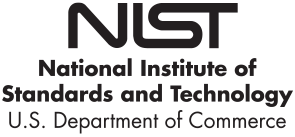
Download/Print PDF Take the Quiz
You Get a Phone Call, Pop-Up, or Email Telling You There's a Problem With Your Computer
Often, scammers are behind these calls, pop-up messages, and emails. They want to get your money, personal information, or access to your files. This can harm your network, put your data at risk, and damage your business.
How the Scam Works
The scammers may pretend to be from a well-known tech company, such as Microsoft. They use lots of technical terms to convince you that the problems with your computer are real. They may ask you to open some files or run a scan on your computer — and then tell you those files or the scan results show a problem…but there isn’t one.
The scammers may then
Ask you to give them remote access to your computer — which lets them access all information stored on it, and on any network connected to it
Try to enroll you in a worthless computer maintenance or warranty program
Install malware that gives them access to your computer and sensitive data, like user names and passwords
Ask for credit card information so they can bill you for phony services or services available elsewhere for free
Try to sell you software or repair services that are worthless or available elsewhere for free
Direct you to websites and ask you to enter credit card, bank account, and other personal information
How To Protect Your Business
If a caller says your computer has a problem, hang up. A tech support call you don’t expect is a scam —even if the number is local or looks legitimate. These scammers use fake caller ID information to look like local businesses or trusted companies.
If you get a pop-up message to call tech support, ignore it. Some pop-up messages about computer issues are legitimate, but do not call a number or click on a link that appears in a pop-up message warning you of a computer problem.
If you’re worried about a virus or other threat, call your security software company directly, using the phone number on its website, the sales receipt, or the product packaging. Or consult a trusted security professional.
Never give someone your password, and don’t give remote access to your computer to someone who contacts you unexpectedly.
What To Do If You're Scammed
If you shared your password with a scammer, change it on every account that uses this password. Remember to use unique passwords for each account and service. Consider using a password manager.
Get rid of malware. Update or download legitimate security software. Scan your computer, and delete anything the software says is a problem. If you need help, consult a trusted security professional.
If the affected computer is connected to your network, you or a security professional should check the entire network for intrusions.
If you bought bogus services, ask your credit card company to reverse the charges, and check your statement for any charges you didn’t approve. Keep checking your credit card statements to make sure the scammer doesn’t try to re-charge you every month.
Report the attack right away to the FTC at ReportFraud.ftc.gov.










